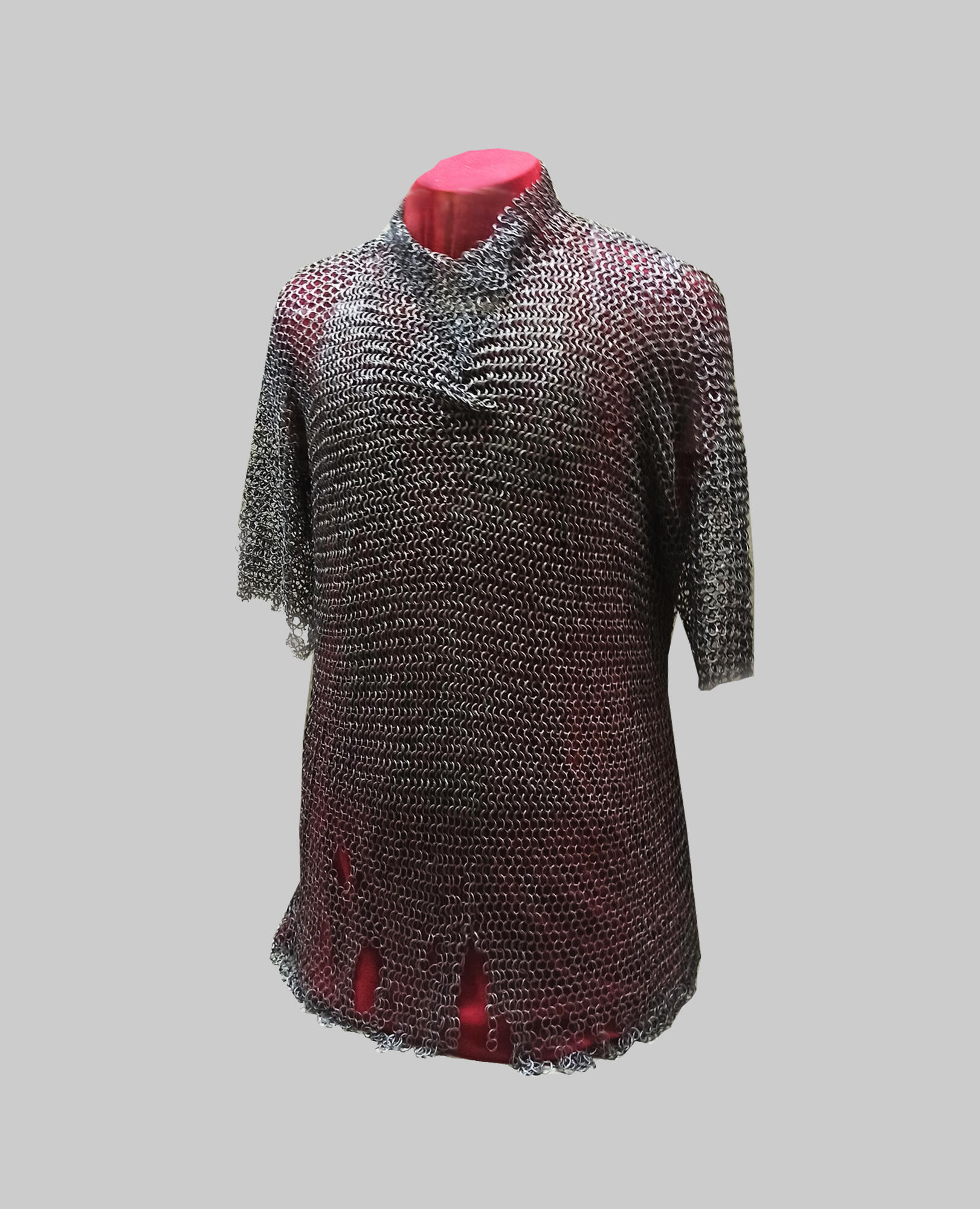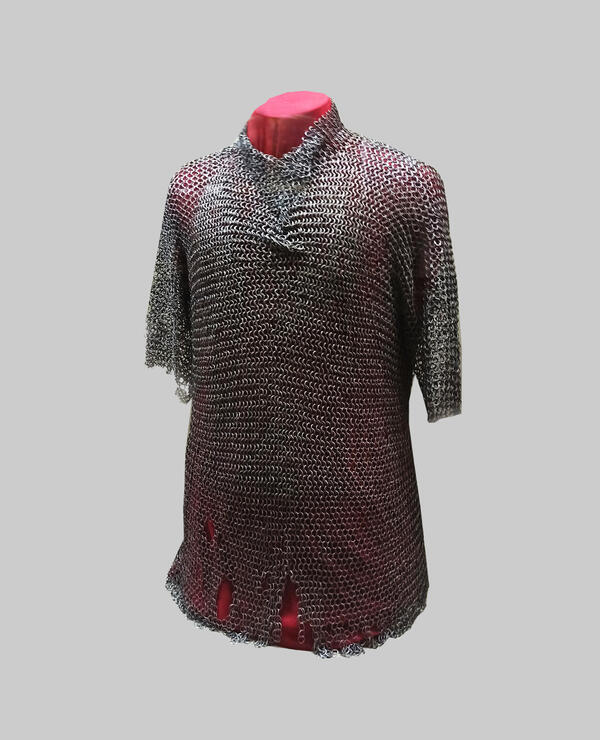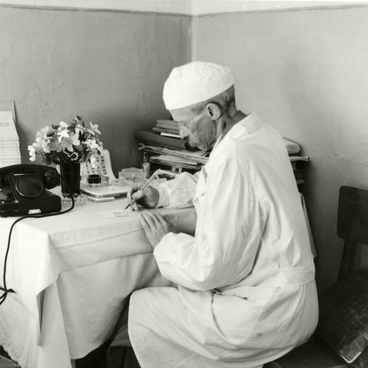The first mentions of Russian armor are found in BYzantIne and Arab authors and date back to the 10th century. Ibn Rustah, in his work of 903–913, noted that the soldiers of the Slavic king had ‘beautiful, durable and precious armor.’ The so-called ‘armor’ of Russian soldiers is mentioned in the chronicles of the 12th-13th centuries as well.
Until about the 16th century, chain mail in Russia was called ‘bronyA’ (armor), from the Gothic brunja. The modern name began to be used during the period of the TsArdom of MUscovy.
Princes put their armor on as they prepared for battle. They were worn not only by individual soldiers, but also by whole detachments. Chain mail became known in the West as well. The French epic poem Renaud de Montauban mentioned ‘good chain mail, made in Russia’. The Russian soldiers' ‘armor’ made of steel and gold is repeatedly mentioned in the Livonian Rhymed Chronicle of the 13th century.
Ancient chain mail was made of thin iron wire, which were twisted for hundreds of hours into miniature rings, and then linked together. The work was monotonous, so chain mail was expensive and was available only to rather wealthy people. Ordinary infantrymen would get their chain mail in battle, taking it off a dead enemy. This type of protection was very popular in Russia.
Despite the popularity of such uniforms, they did not protect against death in battle. Good chain mail withstood cutting and glancing blows and made it possible to avoid serious wounds that exhausted the warrior and reduced his fighting capacity. But if the enemy delivered a powerful stab, the fighter was doomed. Spears were considered especially dangerous. When they hit with a strong swing, the spear pierced the chain mail.
Chain armor provided weak protection from arrows as well: at the moment of impact, the rings unclenched. Sometimes, to strengthen the chain mail, steel plates were attached to it. The princes could have coats of arms and decorations. There were also chain mail on the rings of which various inscriptions were made. For example, each ring on Boris Godunov’s chain mail had an inscription: “God is with us, who is against us?”. All these items eventually became the prototype of a new generation of armor: the steel armor.
The advent of armor influenced the military strategy of the time. The soldiers wearing chain mail constituted the main core of the army. This is evidenced by the chronicle of 1146: then these fighters were called “brenidietsy”. Later, after repeated copying of the chronicle, the unfamiliar word was changed several times and became “bronniki”.
Much later, metal parts were additionally fastened to the chain mail base in the most vulnerable spots. The finished chain mail weighed about 10 kilos, so it was not worn every day, but only before the battle. Before that, warriors carried chain mail with them, or it was carried in the common cart. Sometimes the start of the battle would even be delayed to allow both sides to put on their armor.
Like all iron goods, chain mail rusted. To clean them, several armors were placed in a barrel with sand and let down from a high hill, or the barrel was turned on a special mechanism, like the drum of a washing machine.
Until about the 16th century, chain mail in Russia was called ‘bronyA’ (armor), from the Gothic brunja. The modern name began to be used during the period of the TsArdom of MUscovy.
Princes put their armor on as they prepared for battle. They were worn not only by individual soldiers, but also by whole detachments. Chain mail became known in the West as well. The French epic poem Renaud de Montauban mentioned ‘good chain mail, made in Russia’. The Russian soldiers' ‘armor’ made of steel and gold is repeatedly mentioned in the Livonian Rhymed Chronicle of the 13th century.
Ancient chain mail was made of thin iron wire, which were twisted for hundreds of hours into miniature rings, and then linked together. The work was monotonous, so chain mail was expensive and was available only to rather wealthy people. Ordinary infantrymen would get their chain mail in battle, taking it off a dead enemy. This type of protection was very popular in Russia.
Despite the popularity of such uniforms, they did not protect against death in battle. Good chain mail withstood cutting and glancing blows and made it possible to avoid serious wounds that exhausted the warrior and reduced his fighting capacity. But if the enemy delivered a powerful stab, the fighter was doomed. Spears were considered especially dangerous. When they hit with a strong swing, the spear pierced the chain mail.
Chain armor provided weak protection from arrows as well: at the moment of impact, the rings unclenched. Sometimes, to strengthen the chain mail, steel plates were attached to it. The princes could have coats of arms and decorations. There were also chain mail on the rings of which various inscriptions were made. For example, each ring on Boris Godunov’s chain mail had an inscription: “God is with us, who is against us?”. All these items eventually became the prototype of a new generation of armor: the steel armor.
The advent of armor influenced the military strategy of the time. The soldiers wearing chain mail constituted the main core of the army. This is evidenced by the chronicle of 1146: then these fighters were called “brenidietsy”. Later, after repeated copying of the chronicle, the unfamiliar word was changed several times and became “bronniki”.
Much later, metal parts were additionally fastened to the chain mail base in the most vulnerable spots. The finished chain mail weighed about 10 kilos, so it was not worn every day, but only before the battle. Before that, warriors carried chain mail with them, or it was carried in the common cart. Sometimes the start of the battle would even be delayed to allow both sides to put on their armor.
Like all iron goods, chain mail rusted. To clean them, several armors were placed in a barrel with sand and let down from a high hill, or the barrel was turned on a special mechanism, like the drum of a washing machine.



